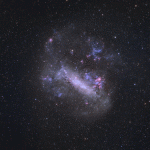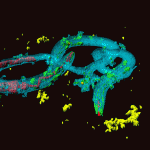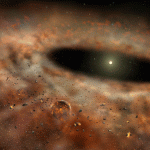Scientists have found nanoparticles inside moon bubbles.
Lunar soil has many unusual properties — it is chemically active and, thanks to its electro-static change, hovers above the surface of the moon. Its low thermal conductivity means that its temperature can be 160 degrees above the surface and -40 degrees just two metres below, and its sticky, brittle nature wears away the surface of glass and metal.
Researchers from the Queensland University of Technology suggest that this weird behaviour may be caused by nanoparticles, which form inside glass bubbles in the soil. The tiny size of these particles gives them exceptional properties, according to Dr Marek Zbik, lead author of the study published in International Scholarly Research Network Astronomy and Astrophysics.
“We don’t understand a lot about quantum physics yet but it could be that these nano particles, when liberated from their glass bubble, mix with the other soil constituents and give lunar soil its unusual properties.”
Nanoparticles have been observed in lunar soil before, but their source had not previously been identified. While they had been associated with broken samples of glass bubbles, which form a large component of lunar soil, they were believed to be the result of contamination.
Zbik examined an unopened bubble in Taiwan using synchrotron-based nano tomography to decrease the risk of breakage and contamination. This method enables scientists to make 3D images of the bubbles and their interiors using a transmission X-ray microscope.
“Instead of gas or vapour inside the bubbles, which we would expect to find in such bubbles on Earth, the lunar glass bubbles were filled with a highly porous network of alien-looking glassy particles that span the bubbles’ interior.”
The nanoparticles are suggested to have formed within the bubble during meteorite impacts on the moon, which are usually violent due to the lack of an atmosphere. High temperatures generated by the impact melt the rock and glass bubbles form inside the molten rock, like soft drink bubbles trying to escape the bottle.
The presence of the particles inside the unbroken bubble suggests that they form inside during or after this process. They are then released when the glass bubbles are pulverised by subsequent impacts.
The next step is to determine how the particles themselves evolve from this process. “It may also lead us to completely different way of manufacturing nano materials,” Zbik says.
Source: Queensland University of Technology
Featured image credit: NASA/Goddard Space Flight Center/Arizona State University






